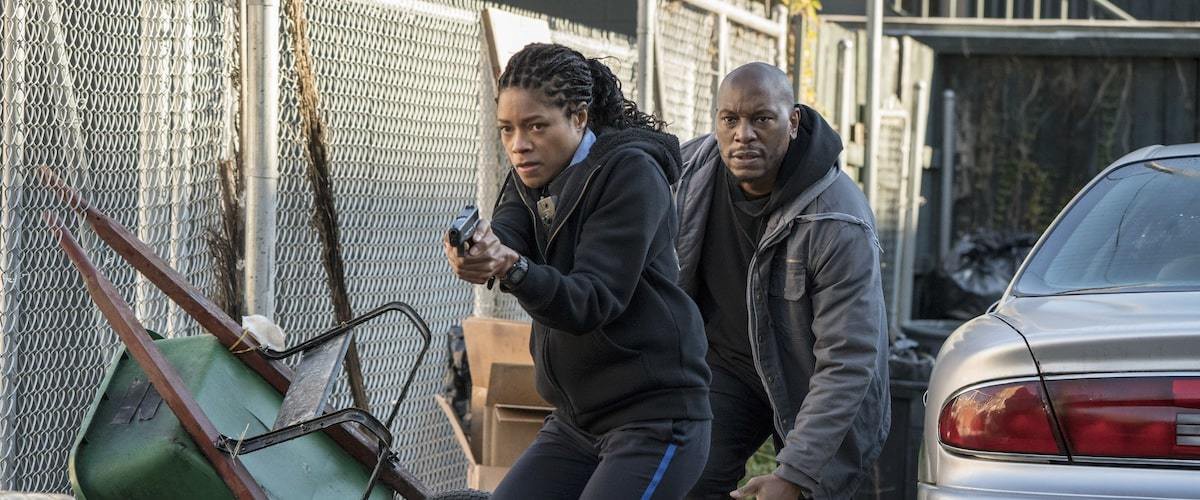Black and Blue follows Alicia West (Naomie Harris), a young New Orleans police officer. After capturing an act of police corruption, she is targeted by the police and local gangs. She goes on the run, hoping to survive the ordeal. The end result is a crime film that’s in the middle ground; it’s neither bad nor great. In all honesty, “Black and Blue” is a satisfying experience, complete with solid craftsmanship.
With the help of cinematographer Dante Spinotti, Deon Taylor (the director) creates a murky, lived in atmosphere. Spinotti, an artist accustomed to the cinematic mechanics of crime environments, photographs the environment with ease, capturing the long-term scars of New Orleans. The after-effects of Hurricane Katrina loom large, and at the onset, we see the harshness that bestows urban civilians. The broken, vandalized environment creates something of a ghost town.
Taylor, an African American artist, does a wonderful job of bringing racial injustice to the big screen. To put it simply, there is no shying away from police corruption or communal decay. We see multiple forms of African American experience, largely connected to fearful living. The end result is a film with a deeply affecting pulse, perfectly suitable for today’s social climate.
With this film, there’s a sense of photographic franticness. The flick’s hectic nature completely aligns with the main character’s journey. Thankfully, the film’s utilization of frantic-like sensibilities never feels overbearing or visually uninteresting. The action is always clear. Spatial relations are always established, and when bullets are fired, we see the horror that comes with undisciplined gun-play. When bullets hit human beings, the results are quick and nasty, pointing to the ever disturbing nature of violence. Kinetic energy is sprinkled throughout the narrative, giving the the film a peppy change of pace.
Overall, the performances do not disappoint. Naomie Harris, one of the best women in the James Bond universe, turns in an exceptional performance, consisting of perspective, hopefulness, and unabashed morality. The screenplay, written by Peter A. Dowling, does a solid job of capturing the power of female goodness. While a bit on the nose at times, the script shows us that in a world so corrupt, it’s easy to give into adversity. But in all honesty, the toughest thing of all is choosing to be a good human being.
Tyrese Gibson turns in a fine performance, a far cry from his flashy, overly comedic roles in the “Fast and Furious” Franchise.” This time around, Gibson is more subdued. His seriousness perfectly echoes his earlier work with John Singleton, an filmmaker who wonderfully navigated the cinematic realm of African American experience. Hopefully, in the near future, Gibson will continue to embrace his dramatic chops.
“Black and Blue” won’t blow your socks off, but it will give you proper entertainment. Like most films, it’s not devoid of flaws. At times, the score minimizes the weight of specific scenes. Other times, the dialogue becomes monumentally hammy, and as time goes on, specific performances are overplayed. At times, the actors feel like caricatures instead of developed beings.
Lastly, the tension that exists between the main character and the locals feels a bit underdeveloped. If this element had been fleshed out, the ensuing results would spark even more resonance. But all in all, if you are looking for a worthwhile movie, watch “Black and Blue.” It may be formulaic, but Taylor makes it enjoyable.
Originally published by Dillon McCarty for Incluvie on November 2, 2019

Comments